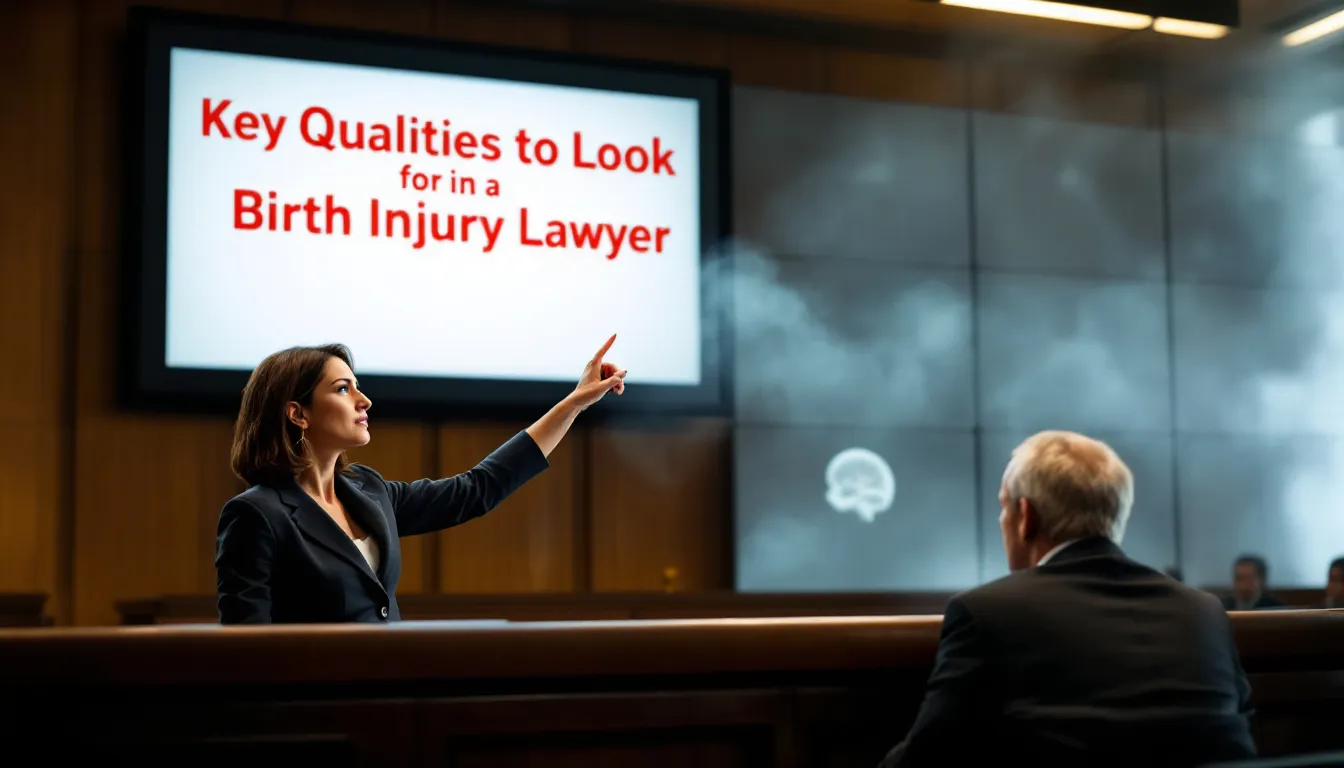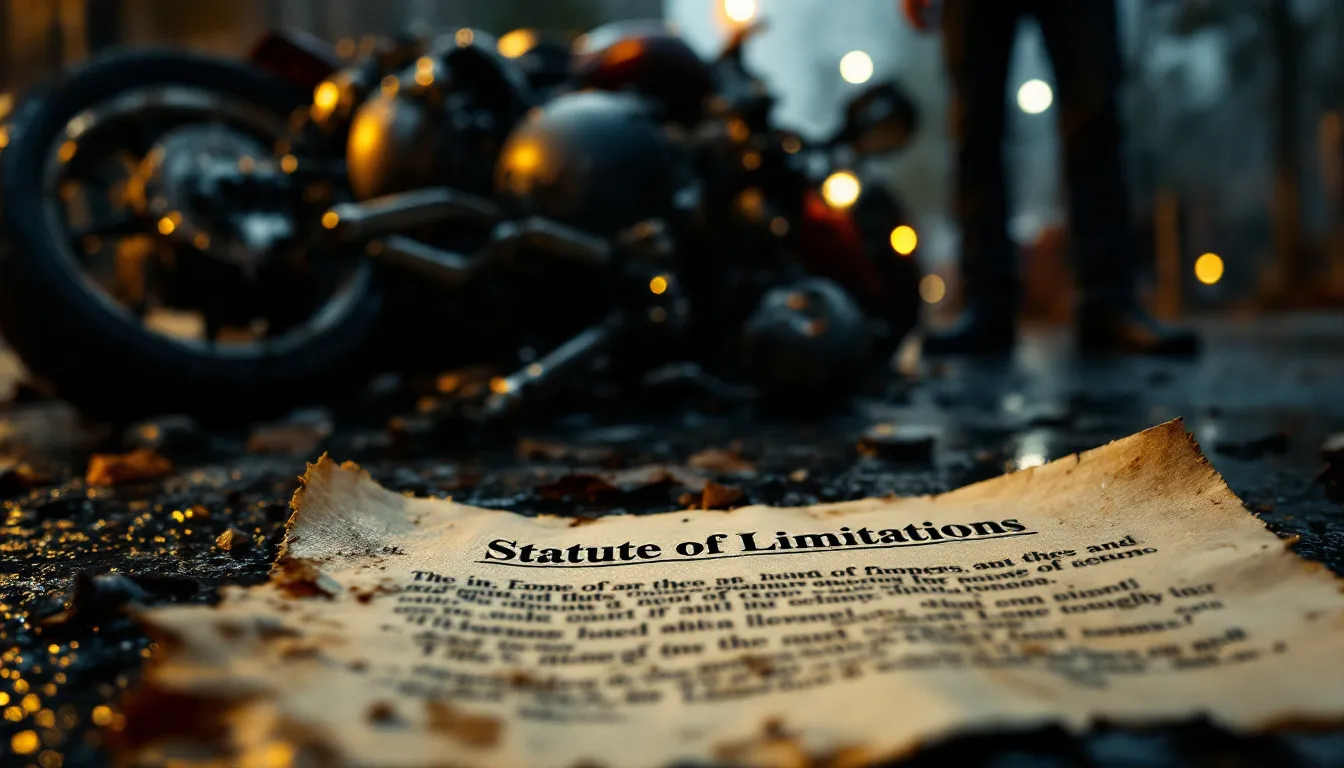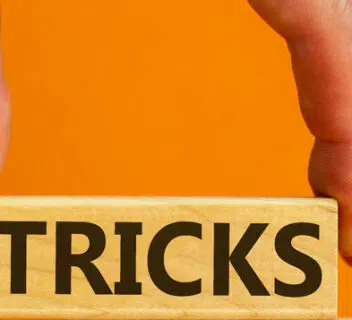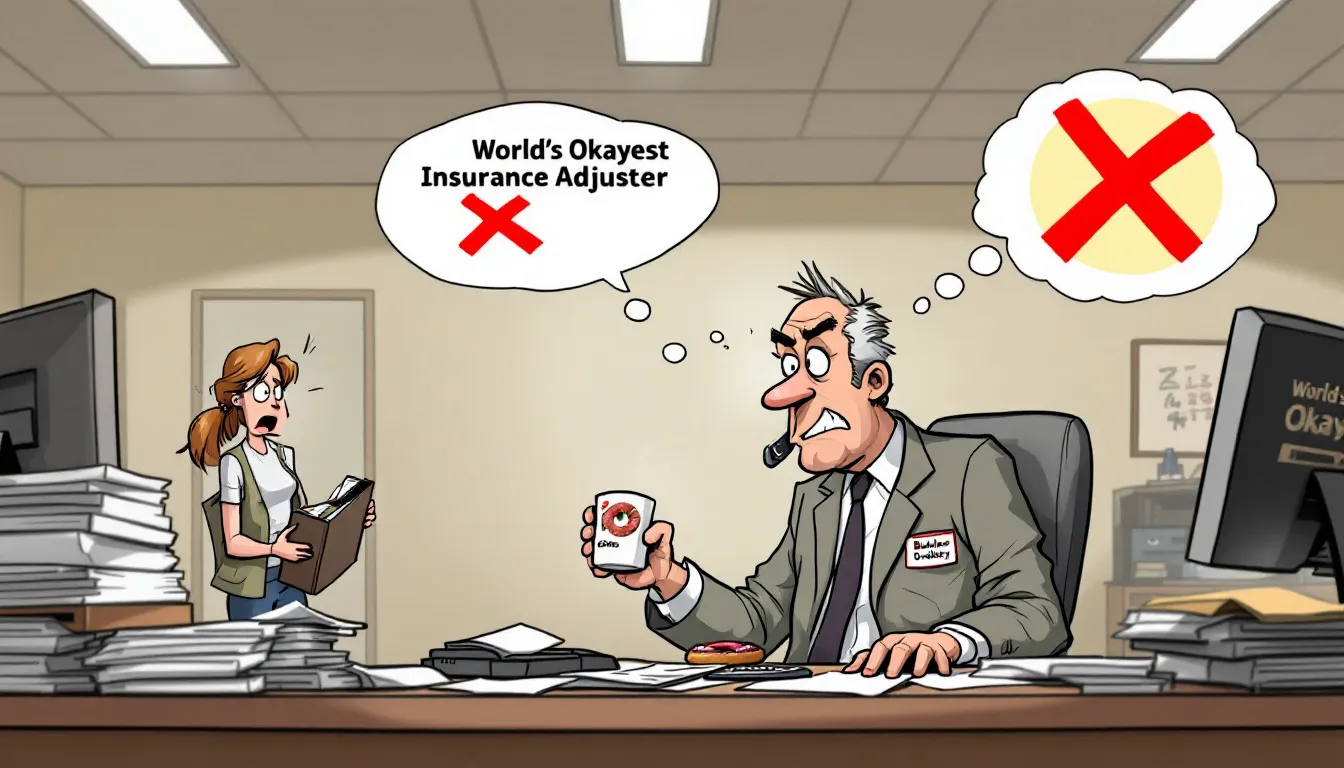Getting into any auto accident can be overwhelming—but when the collision involves a commercial truck, the stakes are even higher. The sheer size and weight of commercial trucks make them especially dangerous.
Injuries are often more severe, damages are more costly, and the legal issues tend to be more complex. Accident victims face serious repercussions, including emotional and physical toll, and navigating the range of damages that can be claimed can be daunting.
If you or someone you care about has been injured in a crash involving a large commercial vehicle, you might be wondering where to turn.
This is where a lawyer for 18-wheeler accident cases becomes crucial. They understand the laws and procedures that apply to truck accident claims and can help you hold the responsible parties accountable. Houston truck accident attorneys have a successful track record in representing victims of truck accidents in Houston, emphasizing their expertise and commitment to securing maximum compensation for their clients.
Understanding Truck Accidents
Truck accidents can be complex and devastating, often resulting in severe injuries or fatalities. The size, speed, and operational demands of commercial trucks introduce a wide array of hazards not typically seen in other types of auto accidents.
Unlike a standard fender bender, a collision involving an 18-wheeler can lead to life-altering consequences, from permanent disability to wrongful death.
These accidents typically involve multiple parties, including the truck driver, the trucking company, third-party contractors, maintenance crews, parts manufacturers, and sometimes even government entities responsible for roadway safety.
Because of this complexity, determining who is at fault requires thorough investigation and legal expertise. Houston truck accidents, in particular, highlight the complexities of liability determination and the importance of hiring an experienced attorney to navigate potential negotiations and litigation. A single crash can lead to a web of liability that only a qualified legal team can untangle.
Truck accident litigation presents unique challenges compared to standard vehicle collision cases, necessitating experienced attorneys who understand federal and state trucking regulations to successfully pursue claims against trucking companies.
Understanding the causes and consequences of truck accidents is crucial for victims and their families as they navigate the legal process and seek compensation.
Every detail matters: from the truck’s maintenance records to the driver’s work schedule, from the condition of the road to the weather at the time of the crash. Each piece of evidence can play a pivotal role in proving negligence and building a strong legal case.
Truck accidents can occur due to various factors, including driver error, vehicle maintenance issues, and adverse weather conditions. Among the most common causes are:
- Driver Fatigue: Many truckers work long hours and may be pushed to meet tight delivery schedules. This can result in drowsy driving, which significantly impairs reaction time and judgment.
- Distracted Driving: Truck drivers may engage in texting, eating, or other distractions behind the wheel, which can be deadly when controlling such a large vehicle.
- Speeding: Despite regulations, some drivers speed to meet deadlines, increasing the chance of losing control of the truck.
- Improper Training: Trucking companies may cut corners in training to save money, placing inexperienced drivers on the road.
- Mechanical Failures: Worn brakes, faulty steering components, or tire blowouts can lead to catastrophic crashes.
Additionally, some trucking companies may prioritize profits over safety. They may encourage or even pressure drivers to exceed legal driving limits, skip mandatory breaks, or falsify logbooks. In other cases, they may fail to maintain their fleet properly, ignore safety recalls, or neglect to perform necessary inspections. These reckless practices significantly increase the risk of accidents.
These factors make it essential for victims to seek legal assistance. A lawyer for 18-wheeler accident cases will have the resources and knowledge needed to investigate the crash thoroughly. They can determine which parties are liable, collect the right evidence, and help ensure the injured party receives fair and full compensation for their losses.
Because of the complexity and severity of truck accident cases, legal support isn’t just helpful—it’s often necessary. Having the right lawyer on your side can make a significant difference in your ability to pursue full compensation.
What Makes Truck Accidents So Dangerous Compared to Other Types of Auto Accidents?
Not all vehicle accidents are created equal. Accidents involving 18-wheelers and other commercial trucks come with unique risks that can make them far more hazardous than standard car crashes. The dangers stem from the size and nature of commercial trucks, their operational requirements, and the often hazardous materials they carry.
Size and Weight
An average passenger car weighs about 3,000 to 4,000 pounds. By comparison, a fully loaded 18-wheeler in the commercial trucking industry can weigh up to 80,000 pounds. This stark difference in mass means that any impact between a big rig and a car is likely to be catastrophic. The smaller vehicle often bears the brunt of the damage, leading to crushed frames, roof collapses, and devastating injuries for the occupants.
Statistics on truck crashes in the greater Houston area highlight the high incidence of truck accidents and their severe consequences, including fatalities and injuries.
This weight disparity also increases the force of impact exponentially. When a truck traveling at highway speed collides with a standard car, the energy transferred can obliterate the smaller vehicle. Survivors of a truck crash often face long-term injuries such as spinal damage, traumatic brain injuries, or amputations, which come with enormous medical and emotional costs.
Stopping Distance
Large trucks need more time and distance to stop than regular vehicles. Depending on speed and weight, a fully loaded semi-truck can require up to 40% more stopping distance than a passenger car. If a truck is speeding or following too closely, it may not be able to stop in time to avoid a collision. This is especially dangerous in highway conditions where traffic can slow down suddenly due to congestion or accidents ahead.
Limited Visibility
Truck drivers sit higher off the ground and have significant blind spots—especially along the sides, directly in front, and behind the truck. These blind spots, sometimes called “no-zones,” are large enough to hide entire cars. Smaller vehicles can disappear from view, increasing the risk of side-swipe, merging, or backing-up accidents.
Even with mirrors and advanced camera systems, visibility remains a challenge. When drivers fail to properly check their blind spots before changing lanes or turning, they can easily collide with vehicles they didn’t see.
Reduced Maneuverability
Due to their length, weight, and design, 18-wheelers require more space to turn, change lanes, or avoid hazards. In tight spaces—such as city streets, construction zones, or sharp curves—truck drivers must perform complex maneuvers with little room for error.
A truck driver’s use of technology, such as dash cams, can be crucial in accidents, providing evidence that attorneys can leverage to establish fault and secure compensation.
In emergency situations, a truck may not be able to take evasive action in time, leading to collisions or rollovers. Jackknife accidents, where the trailer swings out at a dangerous angle from the cab, are especially common in high-speed or slippery conditions.
Cargo Hazards
Some trucks carry hazardous materials, oversized loads, or freight that must be secured according to strict regulations. A spill or cargo shift can create road hazards, trigger secondary collisions, or cause fires and explosions. Improperly loaded cargo can also destabilize the truck, making it harder to steer or increasing the chance of tipping over.
In some cases, cargo may detach entirely—falling into traffic and causing chaos. These types of accidents can result in multiple-vehicle collisions and are especially dangerous on highways, where reaction time is minimal.
Complex Regulations
Truck drivers and trucking companies are required to follow federal and state safety regulations. These rules govern everything from rest breaks and maximum driving hours to equipment maintenance and cargo handling. When these laws are ignored, the chances of an accident increase dramatically.
Because these regulations are specific to the trucking industry, truck accident cases often involve a deeper investigation into whether rules were followed. Violations can serve as critical evidence of negligence in a lawsuit. A trucking accident attorney can help navigate these complex regulations, preserve critical evidence, and advocate for the victim’s interests against the trucking company’s insurance representatives.
Given all of these risks, it’s easy to see why having a lawyer on your side is so important. They can untangle the complexities, identify all liable parties, and help ensure you receive compensation that reflects the true impact of your injuries.
How Do I Know Whether I Have an Actionable Claim for an 18-Wheeler Accident?
To have a valid claim, you must be able to establish liability—meaning someone else’s negligence or wrongdoing caused your injuries. This typically requires proving four key elements:
- Duty of care
- Breach of duty
- Causation
- Damages
Victims often face significant challenges when dealing with truck accident injury claims, such as delays, excessive paperwork, and pressure to settle for low amounts, which can lead to lower compensation.
An experienced truck accident attorney can help evaluate your situation, ensuring that all necessary elements are thoroughly examined and that you receive the compensation you deserve.
1. Duty of Care
The truck driver (and other potential parties) had a legal obligation to operate safely and follow traffic laws.
2. Breach of Duty
There was a failure to uphold that duty. For example, the driver was speeding, fatigued, or failed to check blind spots.
3. Causation
This breach directly caused the accident and your injuries.
4. Damages
You suffered actual harm—such as medical bills, lost income, pain, and emotional distress.
Example: A truck driver falls asleep at the wheel due to violating rest break rules and crashes into your vehicle. The trucking company later admits they failed to enforce federal hours-of-service regulations. This could create a strong foundation for a lawsuit.
AHouston truck accident lawyer can evaluate your situation and determine if these legal elements are met.
What Steps Should I Take After an 18-Wheeler Accident?
Taking the right steps after a truck accident is essential to protect your health and your ability to seek compensation. The moments and days following the crash can shape the strength of your legal claim. Here’s what you should do (and avoid) to make sure your rights are protected:
1. Call 911 and Get Medical Help
Always prioritize safety. Call emergency services immediately—even if injuries seem minor. Injuries like internal bleeding or concussions may not be immediately apparent, and a medical professional can provide a proper evaluation.
Paramedics can begin treatment on the scene, and the emergency room will create medical records that serve as important documentation in your case. Even if you walk away from the accident, follow up with a doctor.
Documenting your injuries right away also helps your lawyer tie those injuries directly to the crash, which is a critical part of proving damages in a personal injury claim.
2. Report the Accident
Make sure a police report is filed at the scene. Law enforcement officers will document the facts, take witness statements, evaluate road conditions, and often indicate who appears to be at fault. This report becomes an essential piece of evidence in any insurance claim or lawsuit.
Be truthful and factual when speaking to the police, but avoid speculating or admitting fault. Just explain what happened to the best of your ability.
Later, your lawyer can use the report as a foundation to build your case, especially if the officer noted that the truck driver may have violated traffic laws.
3. Gather Evidence (If Safe)
If you’re physically able and it’s safe to do so, collect your own evidence at the scene. Use your phone to take photos and videos of the damage to all vehicles involved, any debris or skid marks on the road, weather and lighting conditions, and your own visible injuries.
Capture the license plate and DOT number on the truck, as well as the company name and any identifying logos.
Ask for names and contact information from any witnesses. Their statements could support your version of events and refute the truck driver’s account. If you overhear the truck driver admit fault or say something important, write it down or record it if permitted.
4. Avoid Talking to Insurance Adjusters
Insurance companies often contact victims within hours of a crash. While they may sound friendly, their goal is to protect the company’s bottom line—not to help you. Adjusters may ask for a recorded statement or pressure you into accepting a quick settlement before you know the full extent of your injuries or losses.
Politely decline these conversations and refer all communication to your attorney. Saying the wrong thing, even unintentionally, can hurt your case. A qualified lawyer for 18-wheeler accident claims knows how to deal with insurance companies and can speak on your behalf to prevent your words from being used against you.
The earlier you involve experienced truck accident lawyers, the better your chances of building a strong claim. Truck accident evidence—such as the truck’s electronic logging device (ELD), black box data, dash cam footage, or maintenance logs—can be lost or destroyed if not requested promptly.
Trucking accident victims face significant challenges due to the severe nature of their injuries and the complex legal processes involved. It is crucial for them to have legal representation to secure adequate compensation for extensive medical treatment and long-term recovery needs.
An attorney can send preservation letters (also called spoliation letters) to the trucking company, compelling them to retain crucial evidence. The sooner you get a lawyer involved, the more effective they can be at securing this information, investigating the crash, identifying all liable parties, and estimating the true value of your damages.
Having legal representation from day one also gives you peace of mind. You won’t have to deal with the stress of handling paperwork, legal deadlines, or negotiation tactics alone. With a trusted lawyer in your corner, you can focus on your recovery while your legal team focuses on fighting for your rights.
Evidence Needed to Win a Truck Accident Lawsuit
To win a truck accident lawsuit, gathering and presenting strong evidence is essential. This evidence may include:
- Police Reports and Accident Scene Investigations: Official documentation of the accident can provide critical details about how the crash occurred.
- Witness Statements and Testimony: Eyewitness accounts can corroborate your version of events and help establish fault.
- Medical Records and Expert Testimony: Documentation of your injuries and expert opinions can demonstrate the extent of your damages.
- Truck Driver’s Logbook and Electronic Logging Device (ELD) Data: These records can reveal whether the driver was complying with hours-of-service regulations.
- Black Box Data and Dash Cam Footage: This electronic data can provide insights into the truck’s speed, braking, and other actions leading up to the crash.
- Vehicle Inspection and Maintenance Records: These records can show whether the truck was properly maintained.
- Analysis of Accident Reconstruction and Safety Regulations: Specialists can recreate the accident and determine if safety regulations were violated.
A skilled truck accident attorney can help collect and analyze this evidence to build a strong case and demonstrate the negligence or recklessness of the truck driver or trucking company.
What Sort of Compensation Could I Be Entitled to in a Trailer Truck Accident?
Victims of truck accidents can seek several types of compensation, depending on the circumstances and severity of their truck accident injuries.
Economic Damages
- Medical Bills – ER visits, surgeries, medications, physical therapy, and future care.
- Lost Wages – Time off work during recovery.
- Loss of Earning Capacity – If you can’t return to the same job.
- Property Damage – Repairs or replacement of your vehicle.
Non-Economic Damages
- Pain and Suffering – Physical discomfort and emotional distress.
- Loss of Enjoyment of Life – If injuries limit your ability to enjoy hobbies or daily activities.
- Loss of Consortium – Impact on relationships with loved ones.
Punitive Damages
In extreme cases (e.g., drunk driving or reckless company practices), courts may award additional money to punish wrongdoers.
What Steps Should I Take After an 18-Wheeler Accident?
Taking the right steps after a truck accident is essential to protect your health and your ability to seek compensation. The moments and days following the crash can shape the strength of your legal claim. Here’s what you should do (and avoid) to make sure your rights are protected:
1. Call 911 and Get Medical Help
Always prioritize safety. Call emergency services immediately—even if injuries seem minor. Injuries like internal bleeding or concussions may not be immediately apparent, and a medical professional can provide a proper evaluation.
Paramedics can begin treatment on the scene, and the emergency room will create medical records that serve as important documentation in your case. Even if you walk away from the accident, follow up with a doctor.
Documenting your injuries right away also helps your lawyer tie those injuries directly to the crash, which is a critical part of proving damages in a personal injury claim. Delaying treatment can give the insurance company an excuse to argue that your injuries weren’t serious—or weren’t caused by the accident at all.
2. Report the Accident
Make sure a police report is filed at the scene. Law enforcement officers will document the facts, take witness statements, evaluate road conditions, and often indicate who appears to be at fault. This report becomes an essential piece of evidence in any insurance claim or lawsuit.
Be truthful and factual when speaking to the police, but avoid speculating or admitting fault. Just explain what happened to the best of your ability. Later, your lawyer can use the report as a foundation to build your case, especially if the officer noted that the truck driver may have violated traffic laws.
3. Gather Evidence (If Safe)
If you’re physically able and it’s safe to do so, collect your own evidence at the scene. Use your phone to take photos and videos of the damage to all vehicles involved, any debris or skid marks on the road, weather and lighting conditions, and your own visible injuries. Capture the license plate and DOT number on the truck, as well as the company name and any identifying logos.
Ask for names and contact information from any witnesses. Their statements could support your version of events and refute the truck driver’s account. If you overhear the truck driver admit fault or say something important, write it down or record it if permitted.
4. Avoid Talking to Insurance Adjusters
Insurance companies often contact victims within hours of a crash. While they may sound friendly, their goal is to protect the company’s bottom line—not to help you. Adjusters may ask for a recorded statement or pressure you into accepting a quick settlement before you know the full extent of your injuries or losses.
Politely decline these conversations and refer all communication to your attorney. Saying the wrong thing, even unintentionally, can hurt your case.
The earlier you involve an experienced truck accident lawyer, the better your chances of building a strong claim. Truck accident evidence—such as the truck’s electronic logging device (ELD), black box data, dash cam footage, or maintenance logs—can be lost or destroyed if not requested promptly.
An attorney can send preservation letters (also called spoliation letters) to the trucking company, compelling them to retain crucial evidence. The sooner you get a lawyer involved, the more effective they can be at securing this information, investigating the crash, identifying all liable parties, and estimating the true value of your damages.
Having legal representation from day one also gives you peace of mind. You won’t have to deal with the stress of handling paperwork, legal deadlines, or negotiation tactics alone. With a trusted lawyer for 18-wheeler accident claims in your corner, you can focus on your recovery while your legal team focuses on fighting for your rights.
Who Can I Sue in a Trailer Truck Accident Dispute?
Truck accident cases often involve multiple liable parties. Unlike a typical car accident, where fault may be assigned to a single driver, trailer truck collisions tend to have more complex liability chains. Truck accident victims face significant challenges in identifying all possible defendants, which is key to maximizing their recovery.
Truck Driver
If the driver acted negligently—such as by speeding, driving while fatigued, using a cell phone, driving under the influence, or failing to yield—they can be held personally liable. In some cases, the driver may have violated federal trucking regulations, which further supports a liability claim.
Trucking Company
Employers can be held responsible for their drivers’ actions, especially if the company encouraged unsafe behavior to meet deadlines or failed to enforce compliance with safety regulations. They may also be liable for poor hiring practices, lack of proper training, or failing to discipline drivers with repeated safety violations.
In many cases, a trucking company’s negligence or failure to adhere to safety regulations has directly contributed to significant legal outcomes and settlements for their clients.
Cargo Loaders
Many commercial trucks are loaded by third-party companies. If the truck was improperly loaded—too heavy, unbalanced, or with unsecured cargo—and that caused or contributed to the crash, the loading company may be responsible. Shifting cargo can lead to rollovers or make the truck more difficult to control.
Maintenance Providers
Commercial trucks require frequent inspections and maintenance. If a mechanic or repair shop failed to identify or fix an issue—such as brake failure, faulty steering, or tire blowouts—they can be held liable. Maintenance logs may reveal skipped services or low-quality repairs.
Manufacturers
If the accident was caused by a defective truck component, such as faulty brakes, defective tires, or a malfunctioning trailer hitch, the manufacturer of that part may be liable under product liability laws. Sometimes, entire fleets are recalled due to recurring design flaws.
Government Entities
In some cases, poor road conditions contribute to or cause truck accidents. This might include broken traffic signals, inadequate lighting, missing guardrails, or unsafe intersections. If the crash resulted from these issues, a city, county, or state agency responsible for road maintenance may be legally accountable.
Suing the Employer of the Truck Driver
In many cases, the employer of the truck driver is the most important party to pursue in a lawsuit. Employers can be sued under two main legal theories:
Vicarious Liability
This legal principle allows an employer to be held liable for the negligent actions of its employee, as long as those actions were committed during the course of employment. If the trucker was performing work-related duties at the time of the accident, the company can be held financially responsible—even if the employer itself did nothing wrong.
Negligent Hiring or Supervision
If the trucking company’s hiring practices included employing a driver with a poor safety record, failing to conduct background checks, or ignoring repeated violations, it could be directly liable for negligent hiring. The same applies if the company failed to monitor driving logs, forced drivers to exceed hours-of-service limits, or ignored red flags about unsafe behavior.
A lawyer for truck accident cases will thoroughly investigate employment records, driver history, training logs, and disciplinary reports. If the company’s own policies or lack of oversight contributed to the accident, they can be held accountable for their role in your injuries.
By examining all potential sources of liability, your attorney increases your chance of recovering compensation for medical expenses, lost wages, pain and suffering, and other damages resulting from the crash.
What Happens If I’m Partially At-Fault for My Own Injuries?
Your ability to recover compensation in a truck accident case depends on how fault is assigned. The rules vary depending on your state’s fault doctrine.
Pure Comparative Fault
You can recover damages even if you’re 99% at fault. Your award is reduced by your percentage of fault.
Example: If your damages total $100,000 and you’re 30% at fault, you can still receive $70,000.
Modified Comparative Fault (50% or 51% Rules)
You can recover only if your fault is below a certain threshold (usually 50% or 51%).
Example: In a 51% rule state, if you’re found 52% at fault, you get nothing. If you’re 40% at fault, your $100,000 award becomes $60,000.
Contributory Negligence
Under this strict rule, if you’re even 1% at fault, you can’t recover any compensation.
Only a few states follow this doctrine, but it’s critical to understand the rules in your state. A lawyer for truck accident cases can help protect you from exaggerated claims of fault.
How Long Do I Have to Sue for a Trailer Truck Accident Claim?
Each state sets a statute of limitations—a legal deadline for filing truck accident lawsuits.
Typical Timeframe
Most states give you 2–3 years from the date of the accident.
Exceptions to the Rule
- Delayed Discovery Rule – If you didn’t discover an injury right away, the clock might start later.
- Minors – If the injured person is under 18, they may have more time to file.
- Claims Against Government Entities – Often shorter deadlines, sometimes just months.
Missing the deadline usually means losing your right to sue, so don’t wait. A lawyer for truck accident claims can make sure your case is filed on time.
The Truck Accident Claims Process
The truck accident claims process can be complex and time-consuming. It typically involves the following steps:
- Investigation and Gathering Evidence: Collecting all relevant information to support your claim.
- Filing a Lawsuit: Officially starting the legal process by submitting your claim to the court.
- Discovery and Pre-Trial Preparation: Both sides exchange information and prepare for trial.
- Settlement Negotiations: Attempting to reach an agreement without going to trial.
- Trial and Judgment: Presenting your case in court if a settlement cannot be reached.
A truck accident attorney can guide victims through this process, ensuring that their rights are protected and that they receive fair compensation for their injuries and losses.
Common Tactics Used by Insurance Adjusters
Insurance adjusters often use tactics to minimize or deny truck accident claims. These tactics may include:
- Delaying or Denying Claims: Prolonging the process in hopes that you will give up.
- Requesting Excessive Paperwork or Documentation: Making the process cumbersome to discourage you.
- Conducting Lengthy Investigations: Using time-consuming methods to delay payouts.
- Offering Low Settlement Amounts: Proposing insufficient compensation to quickly close the case.
- Blaming the Victim for the Accident: Shifting fault to reduce their liability.
Trucking accidents have a significant impact on public safety and carry serious legal implications for victims.
A skilled truck accident attorney can help victims navigate these tactics and negotiate with insurance companies to ensure fair compensation. Truck accident attorneys have extensive knowledge of trucking regulations and are dedicated to helping clients seek full compensation.
The Role of Negligent Truck Maintenance in Accidents
Negligent truck maintenance can contribute to truck accidents, resulting in severe injuries or fatalities. Trucking companies have a responsibility to maintain their vehicles regularly, ensuring that they are safe for operation. Failure to do so can lead to mechanical issues, such as brake failure or tire blowouts, which can cause accidents.
A truck accident attorney can investigate the role of negligent truck maintenance in an accident and hold the trucking company accountable for their negligence. By examining maintenance records and vehicle inspection reports, an attorney can uncover evidence of neglect and help victims seek the compensation they deserve.
What Can a Truck Accident Lawyer Do to Help Me With My Dispute?
A truck accident attorney plays a key role in protecting your rights and building a strong claim. Here’s how truck accident lawyers help:
- Investigate the Crash – Collect black box data, review dashcams, gather accident reports.
- Identify All Liable Parties – Pursue claims against every entity that contributed to the crash.
- Handle Insurance Negotiations – Push back against lowball offers.
- Work with Experts – Accident reconstructionists, medical professionals, and economists.
- File Legal Paperwork – Meet court deadlines and file motions if needed.
- Prepare for Trial – If negotiations fail, take your case to court.
- Keep You Informed – Provide regular updates and explain your options every step of the way.
A trucking accident lawyer is crucial in navigating the complexities of truck accident claims, preserving crucial evidence, and securing the compensation you deserve.
With experienced truck accident lawyers for accident litigation, you’re not just getting legal help—you’re getting an advocate who fights for your financial and physical recovery.
How Much Does a Trailer Truck Accident Attorney Cost to Hire?
Most personal injury lawyers—including those handling truck accidents—work on a contingency fee basis.
- No Upfront Costs – You don’t pay anything out of pocket.
- You Only Pay If You Win – The attorney receives a percentage (usually 25–40%) of your settlement or judgment.
- Free Consultation – Most offer free case reviews to help you understand your rights.
This setup makes legal help accessible to everyone, regardless of income.
If you’ve been injured in a truck accident, you deserve to understand your rights. Don’t take on the trucking industry alone. Call 1-800-THE-LAW2 to get connected with experienced truck accident lawyers who specialize in 18-wheeler cases.































